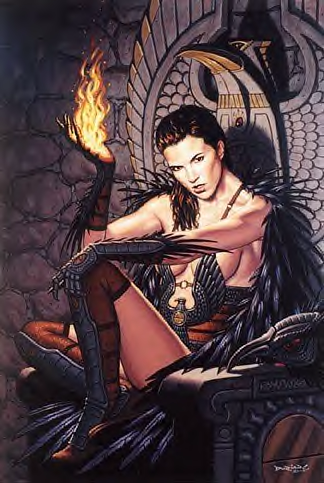Anatomy of the HeartYour heart is located under the ribcage in the center of your chest between your right and left lungs. Its muscular walls beat, or contract, pumping blood continuously to all parts of your body.The size of your heart can vary depending on your age, size, and the condition of your heart. A normal, healthy, adult heart most often is the size of an average clenched adult fist. Some diseases of the heart can cause it to become larger. The Exterior of the HeartBelow is a picture of the outside of a normal, healthy, human heart.Heart ExteriorThe illustration shows the front surface of a heart, including the coronary arteries and major blood vessels. The heart is the muscle in the lower half of the picture. The heart has four chambers. The right and left atria (AY-tree-uh) are shown in purple. The right and left ventricles (VEN-trih-kuls) are shown in red.Some of the main blood vessels—arteries and veins—that make up your blood circulatory system are directly connected to the heart. The ventricle on the right side of your heart pumps blood from your heart to your lungs. When you breathe air in, oxygen passes from your lungs through your blood vessels and into your blood. Carbon dioxide, a waste product, is passed from your blood through blood vessels to your lungs and is removed from your body when you breathe out. The left atrium receives oxygen-rich blood from your lungs. The pumping action of your left ventricle sends this oxygen-rich blood through the aorta (a main artery) to the rest of your body. The Right Side of Your HeartThe superior and inferior vena cavae are in blue to the left of the heart muscle as you look at the picture. These veins are the largest veins in your body.After your body's organs and tissues have used the oxygen in your blood, the vena cavae carry the oxygen-poor blood back to the right atrium of your heart. The superior vena cava carries oxygen-poor blood from the upper parts of your body, including your head, chest, arms, and neck. The inferior vena cava carries oxygen-poor blood from the lower parts of your body. The oxygen-poor blood from the vena cavae flows into your heart's right atrium and then on to the right ventricle. From the right ventricle, the blood is pumped through the pulmonary (PULL-mun-ary) arteries (in blue in the center of the picture) to your lungs. There, through many small, thin blood vessels called capillaries, the blood picks up more oxygen. The oxygen-rich blood passes from your lungs back to your heart through the pulmonary veins (in red to the left of the right atrium in the picture). The Left Side of Your HeartOxygen-rich blood from your lungs passes through the pulmonary veins (in red to the right of the left atrium in the picture). It enters the left atrium and is pumped into the left ventricle. From the left ventricle, the oxygen-rich blood is pumped to the rest of your body through the aorta.Like all of your organs, your heart needs blood rich with oxygen. This oxygen is supplied through the coronary arteries as blood is pumped out of your heart's left ventricle. Your coronary arteries are located on your heart's surface at the beginning of the aorta. Your coronary arteries (shown in red in the drawing) carry oxygen-rich blood to all parts of your heart. The Interior of the HeartBelow is a picture of the inside of a normal, healthy, human heart.Heart Interior The illustration shows a cross-section of a healthy heart and its inside structures. The blue arrow shows the direction in which oxygen-poor blood flows from the body to the lungs. The red arrow shows the direction in which oxygen-rich blood flows from the lungs to the rest of the body. The SeptumThe right and left sides of your heart are divided by an internal wall of tissue called the septum. The area of the septum that divides the atria (the two upper chambers of your heart) is called the atrial or interatrial septum.The area of the septum that divides the ventricles (the two lower chambers of your heart) is called the ventricular or interventricular septum. Heart ChambersThe picture shows the inside of your heart and how it's divided into four chambers. The two upper chambers of your heart are called atria. The atria receive and collect blood.The two lower chambers of your heart are called ventricles. The ventricles pump blood out of your heart into the circulatory system to other parts of your body. Heart ValvesThe picture shows your heart's four valves. Shown counterclockwise in the picture, the valves include the aortic (ay-OR-tik) valve, the tricuspid (tri-CUSS-pid) valve, the pulmonary valve, and the mitral (MI-trul) valve.Blood FlowThe arrows in the drawing show the direction that blood flows through your heart. The light blue arrows show that blood enters the right atrium of your heart from the superior and inferior vena cavae.From the right atrium, blood is pumped into the right ventricle. From the right ventricle, blood is pumped to your lungs through the pulmonary arteries. The light red arrows show the oxygen-rich blood coming in from your lungs through the pulmonary veins into your heart's left atrium. From the left atrium, the blood is pumped into the left ventricle. The left ventricle pumps the blood to the rest of your body through the aorta. For the heart to work properly, your blood must flow in only one direction. Your heart's valves make this possible. Both of your heart's ventricles have an "in" (inlet) valve from the atria and an "out" (outlet) valve leading to your arteries. Healthy valves open and close in very exact coordination with the pumping action of your heart's atria and ventricles. Each valve has a set of flaps called leaflets or cusps that seal or open the valves. This allows pumped blood to pass through the chambers and into your arteries without backing up or flowing backward. |







